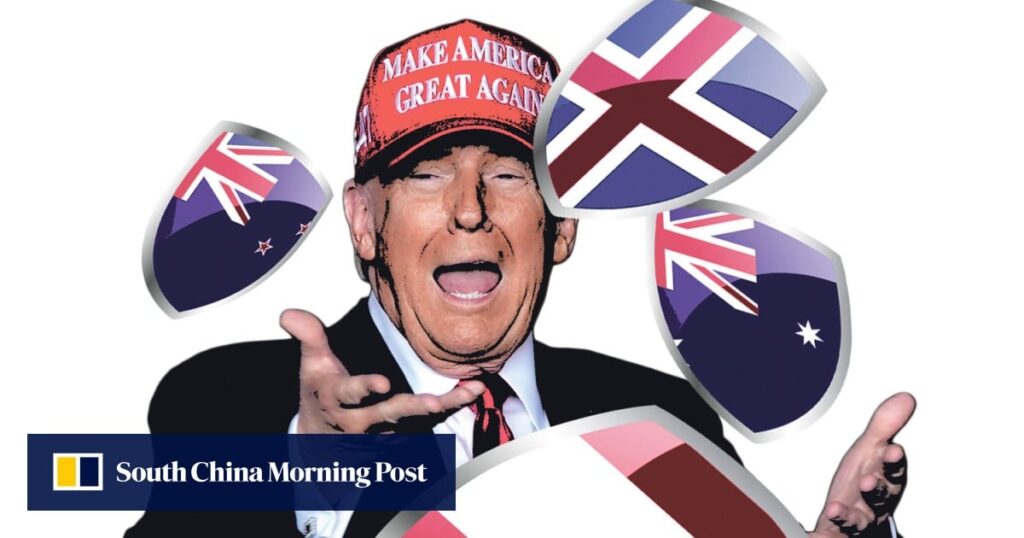Born in the aftermath of World War II, the Five Eyes alliance had long operated in the shadows, sharing intelligence among its five members: the United States, Britain, Canada, Australia and New Zealand.
But in a world reshaped by growing geostrategic competition and US-China tensions, analysts say the group increasingly finds itself at a critical juncture, caught between its Cold War origins and the demands of a new geopolitical era.
The Five Eyes’ scope has widened in recent years – growing beyond intelligence-sharing to encompass security issues and human-rights concerns – but this broadening mandate, which some see as overreach, has come at a time of growing fractures among its members and external pressures that threaten its unity.
Late last month, reports emerged that Peter Navarro, a senior trade adviser to US President Donald Trump, had floated the idea of expelling Canada from the alliance amid the neighbouring nations’ brewing trade war.
Navarro was quick to dismiss the initial Financial Times report, which cited anonymous sources, saying he saw no reason to comment “on any story” that did not name the people it was quoting. “We would never, ever jeopardise our national security, ever, with allies like Canada,” he added.

Still, the report sparked a flurry of speculation about the Five Eyes’ direction, with critics questioning whether the alliance had strayed too far from its roots and risked diluting its core purpose by venturing into areas such as foreign policy and economic coordination.



